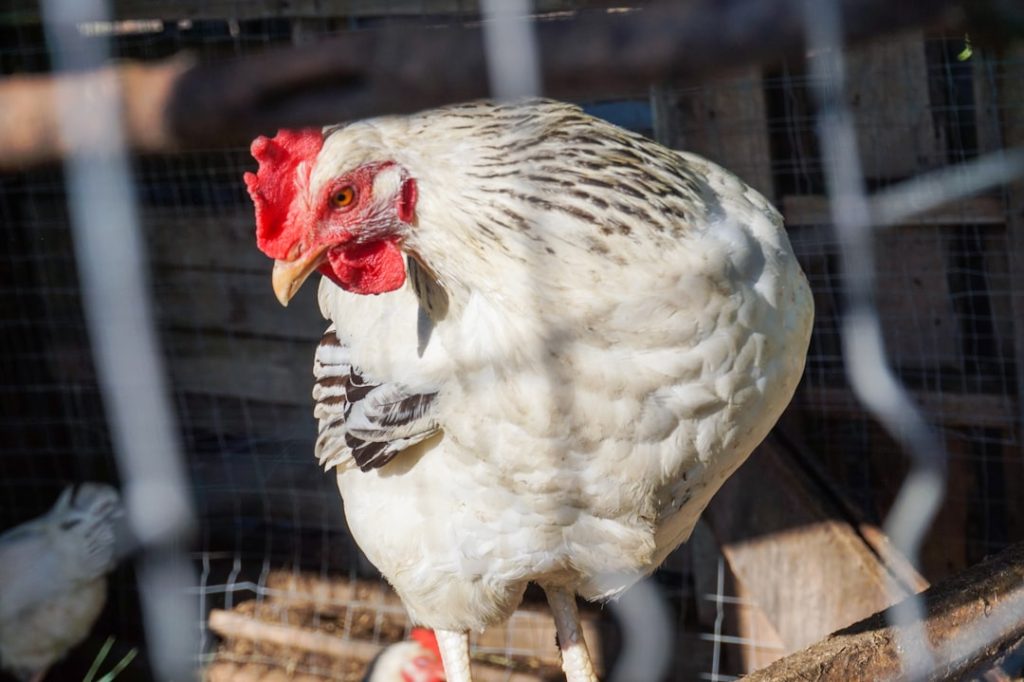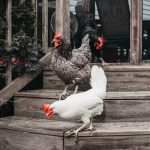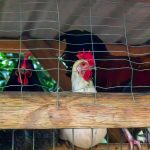Raising chickens in cold weather presents unique challenges for poultry owners. Providing a comfortable and warm environment is crucial for maintaining the health and well-being of chickens during winter months. Proper care and attention to living conditions can prevent issues such as frostbite, respiratory problems, and decreased egg production.
This article explores the role of hay in chicken coops, alternatives for keeping chickens warm, the importance of proper insulation, tips for maintaining warmth without hay, potential risks associated with using hay, and the overall goal of creating a comfortable environment for chickens in cold weather. Chickens are generally hardy animals but remain susceptible to cold temperatures, especially without adequate shelter and bedding. Responsible chicken owners must take proactive measures to ensure their flock stays warm and healthy during winter.
Understanding various options for keeping chickens warm and comfortable is essential for providing optimal care for these birds.
Table of Contents
- 1 Understanding the Role of Hay in Chicken Coops
- 2 Alternatives to Hay for Keeping Chickens Warm
- 3 The Importance of Proper Insulation in Chicken Coops
- 4 Tips for Keeping Chickens Warm Without Hay
- 5 Potential Risks of Using Hay in Chicken Coops
- 6 Providing a Comfortable Environment for Chickens in Cold Weather
- 7 FAQs
- 7.1 Do chickens need hay to keep warm?
- 7.2 How does hay help chickens stay warm?
- 7.3 What other bedding options are suitable for chickens?
- 7.4 Are there any disadvantages to using hay for chickens?
- 7.5 How often should hay be changed in a chicken coop?
- 7.6 Can chickens stay warm without hay or straw?
Key Takeaways
- Chickens need special care in cold weather to stay healthy and comfortable
- Hay plays a crucial role in insulating chicken coops and keeping chickens warm
- Alternatives to hay, such as straw or wood shavings, can also be used to keep chickens warm
- Proper insulation in chicken coops is essential for maintaining a comfortable environment for chickens
- Tips for keeping chickens warm without hay include using heat lamps and providing extra bedding
- Using hay in chicken coops can pose risks such as mold and fire hazards
- It’s important to provide a comfortable and safe environment for chickens in cold weather to ensure their well-being
Understanding the Role of Hay in Chicken Coops
Insulation and Warmth
Hay is a popular choice for bedding in chicken coops due to its insulating properties and ability to provide warmth for chickens during cold weather. The thick and fluffy nature of hay allows it to trap heat and create a cozy environment for chickens to roost and nest. Additionally, hay can absorb moisture and provide a dry surface for chickens to walk on, which is essential for preventing issues such as frostbite and respiratory problems.
Comfort and Egg Production
In addition to its insulating properties, hay also provides a soft and comfortable surface for chickens to rest on. This is particularly important for hens that are laying eggs, as they require a comfortable and stress-free environment to encourage consistent egg production.
Maintenance and Hygiene
The use of hay in chicken coops can also help to reduce odors and maintain a clean living space for your flock.
Overall Benefits
Overall, hay plays a crucial role in keeping chickens warm and comfortable during the winter months.
Alternatives to Hay for Keeping Chickens Warm
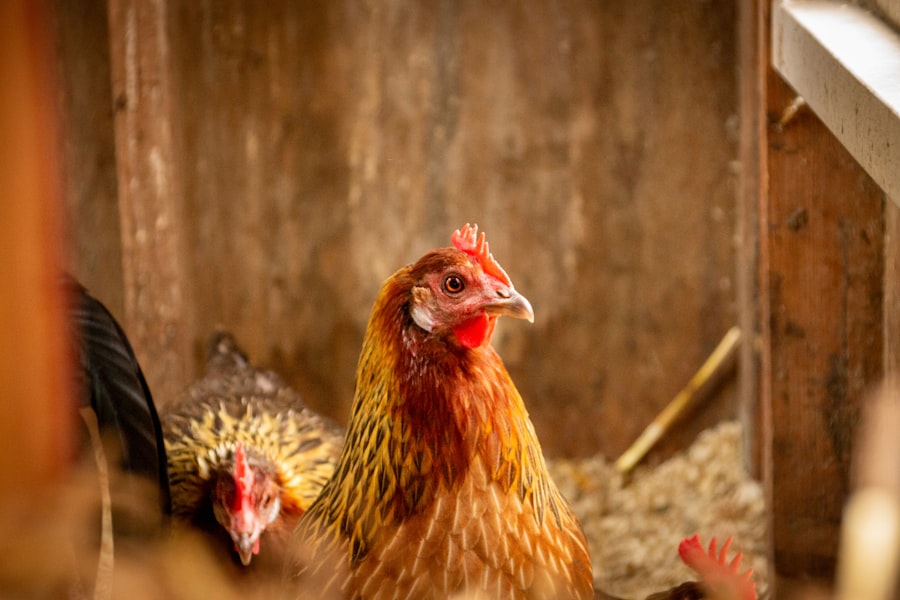
While hay is a popular choice for bedding in chicken coops, there are several alternatives that can also provide warmth and comfort for your flock. One alternative to hay is straw, which offers similar insulating properties and can create a cozy environment for chickens. Straw is also effective at absorbing moisture and providing a dry surface for chickens to walk on, making it a suitable option for cold weather conditions.
Another alternative to hay is wood shavings, which can provide a soft and comfortable bedding option for chickens. Wood shavings are absorbent and can help to maintain a clean and dry living space for your flock. Additionally, wood shavings are readily available and easy to replace, making them a convenient option for chicken owners.
For those looking for a more sustainable option, shredded paper or cardboard can also be used as bedding in chicken coops. While these materials may not provide the same level of insulation as hay or straw, they can still offer a comfortable surface for chickens to rest on. Ultimately, the key is to provide a warm and dry environment for your flock, and there are several alternatives to hay that can help achieve this goal.
The Importance of Proper Insulation in Chicken Coops
Proper insulation is essential for maintaining a warm and comfortable environment for chickens in cold weather. Insulation helps to retain heat within the coop and prevent drafts, which can be detrimental to the health of your flock. Without adequate insulation, chickens may be at risk of developing respiratory problems or experiencing discomfort due to the cold temperatures.
There are several ways to insulate a chicken coop, including adding extra layers of bedding such as hay or straw, sealing any drafts or gaps in the coop walls, and using insulation materials such as foam board or reflective insulation. Additionally, ensuring that the coop is well-ventilated while still maintaining warmth is crucial for preventing issues such as moisture buildup and ammonia levels. Proper insulation not only helps to keep chickens warm during the winter months but also contributes to their overall health and well-being.
By creating a cozy and insulated environment, you can help your flock stay comfortable and happy throughout the colder seasons.
Tips for Keeping Chickens Warm Without Hay
For those who prefer not to use hay in their chicken coops, there are several alternative methods for keeping chickens warm during cold weather. One effective way to provide warmth for your flock is by using heat lamps or heated pads. These devices can be placed in the coop to provide supplemental heat and create a cozy environment for chickens to roost and nest.
Another tip for keeping chickens warm without hay is to provide additional nesting material such as shredded paper or wood shavings. This can help create a soft and comfortable surface for chickens to rest on while also providing some level of insulation against the cold temperatures. Additionally, ensuring that the coop is well-ventilated while still maintaining warmth is crucial for preventing issues such as moisture buildup and ammonia levels.
Proper ventilation can help regulate the temperature inside the coop and prevent issues such as frostbite and respiratory problems.
Potential Risks of Using Hay in Chicken Coops
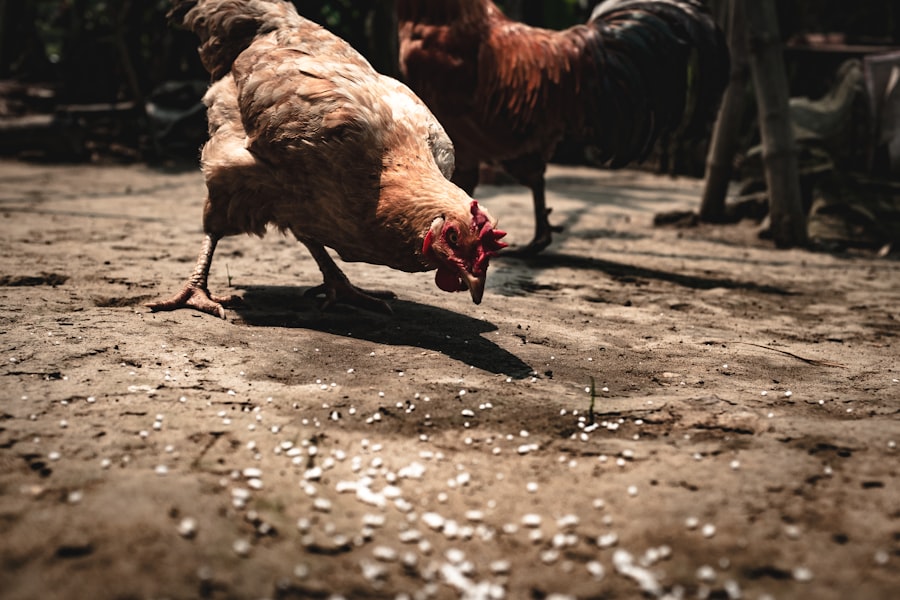
Risks of Mold and Mildew
While hay can provide warmth and comfort for chickens in cold weather, it can also lead to mold or mildew growth, especially if the bedding becomes damp or wet. This can pose health risks to chickens, including respiratory problems or other health issues.
Fire Hazards
Another potential risk of using hay in chicken coops is the fire hazard it presents. Hay is highly flammable, and if not properly managed, it can pose a significant risk of fire within the coop. This risk can be mitigated by ensuring that hay is kept dry and free from any potential ignition sources such as heat lamps or electrical wiring.
Pest Infestations
Additionally, hay can attract pests such as mites or rodents, which can pose health risks to chickens and compromise the cleanliness of the coop. Regular cleaning and maintenance of the coop are essential for preventing pest infestations when using hay as bedding.
Providing a Comfortable Environment for Chickens in Cold Weather
In conclusion, providing a comfortable and warm environment for chickens in cold weather is essential for their health and well-being. While hay is a popular choice for bedding in chicken coops due to its insulating properties, there are several alternatives that can also provide warmth and comfort for your flock. Proper insulation, ventilation, and supplemental heating methods are all important factors to consider when caring for chickens in cold weather.
It’s important to weigh the benefits and potential risks of using hay in chicken coops and make an informed decision based on your specific circumstances. Whether you choose to use hay or explore alternative bedding options, the ultimate goal is to create a cozy and insulated environment that promotes the health and happiness of your flock throughout the winter months. By taking proactive measures to keep chickens warm without hay, you can ensure that they stay comfortable and thriving even in the coldest of temperatures.
If you’re wondering if chickens need hay to keep warm, you may also be interested in learning about the housing needs of turkeys. Check out this article to find out more about how to provide the best shelter for your turkeys.
FAQs
Do chickens need hay to keep warm?
Yes, chickens do benefit from having hay or straw in their coop to help keep them warm during colder months.
How does hay help chickens stay warm?
Hay or straw provides insulation and helps to trap heat, creating a warmer environment for chickens to roost and nest in.
What other bedding options are suitable for chickens?
In addition to hay or straw, other suitable bedding options for chickens include wood shavings, shredded paper, or sand.
Are there any disadvantages to using hay for chickens?
One potential disadvantage of using hay for chickens is that it can become damp and moldy, which can be harmful to the chickens’ health. It’s important to regularly clean and replace the bedding to prevent this.
How often should hay be changed in a chicken coop?
Hay or straw bedding should be changed regularly, at least once a week, to maintain a clean and healthy environment for the chickens.
Can chickens stay warm without hay or straw?
Chickens can stay warm without hay or straw, but providing bedding helps to create a more comfortable and insulated environment for them, especially during colder weather.
Meet Walter, the feathered-friend fanatic of Florida! Nestled in the sunshine state, Walter struts through life with his feathered companions, clucking his way to happiness. With a coop that’s fancier than a five-star hotel, he’s the Don Juan of the chicken world. When he’s not teaching his hens to do the cha-cha, you’ll find him in a heated debate with his prized rooster, Sir Clucks-a-Lot. Walter’s poultry passion is no yolk; he’s the sunny-side-up guy you never knew you needed in your flock of friends!

